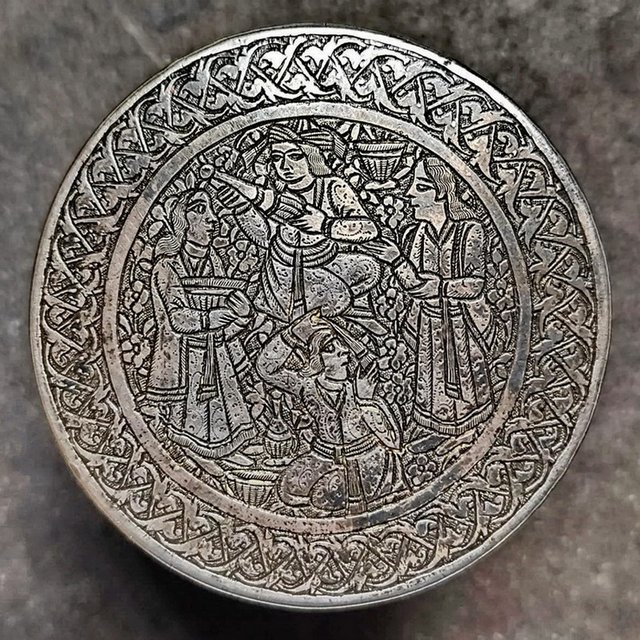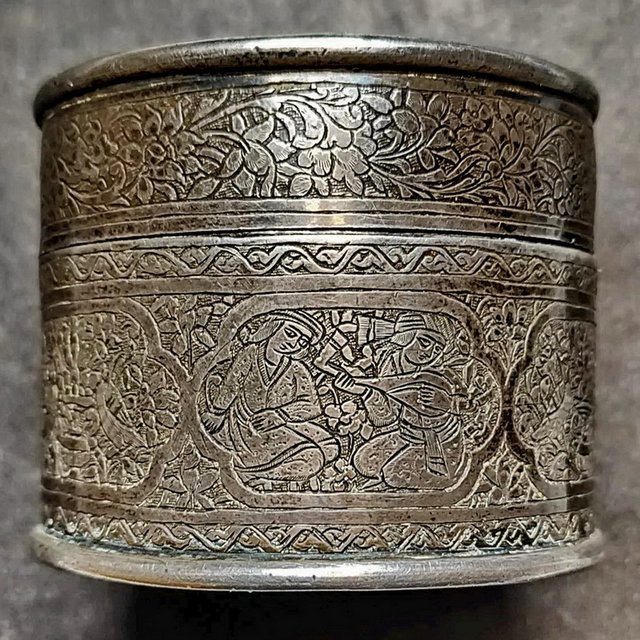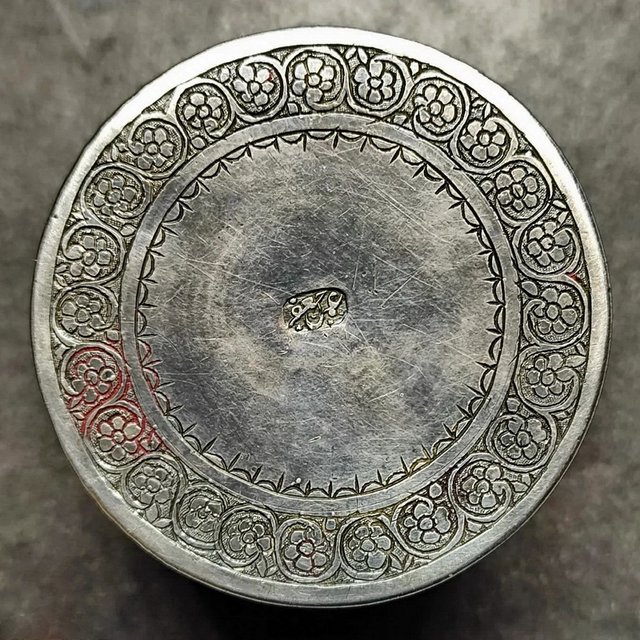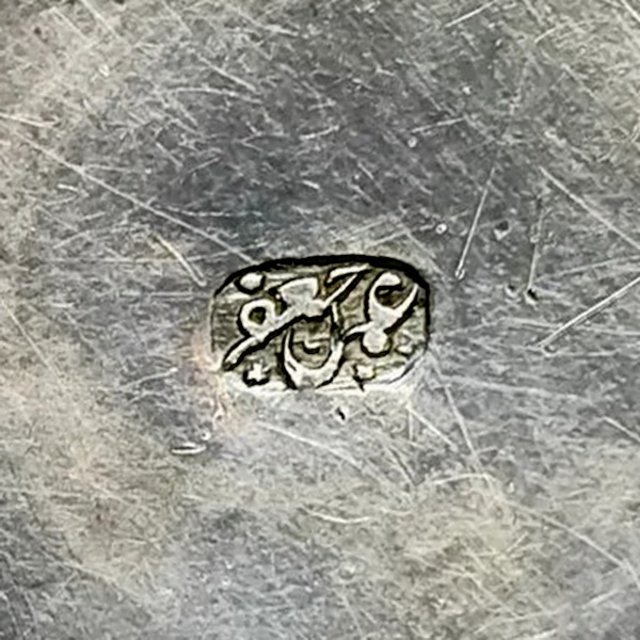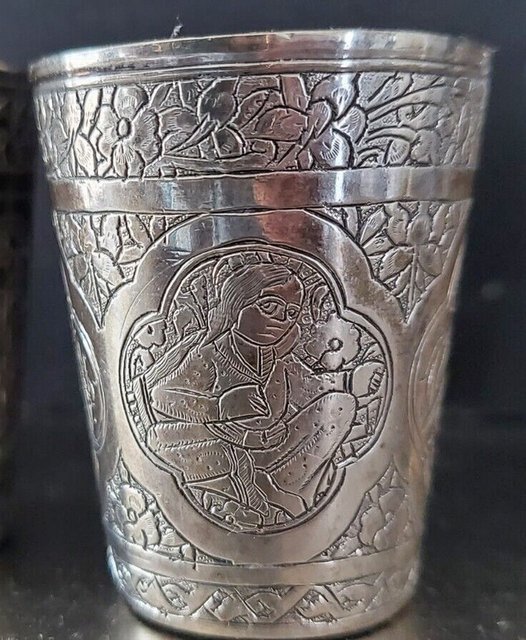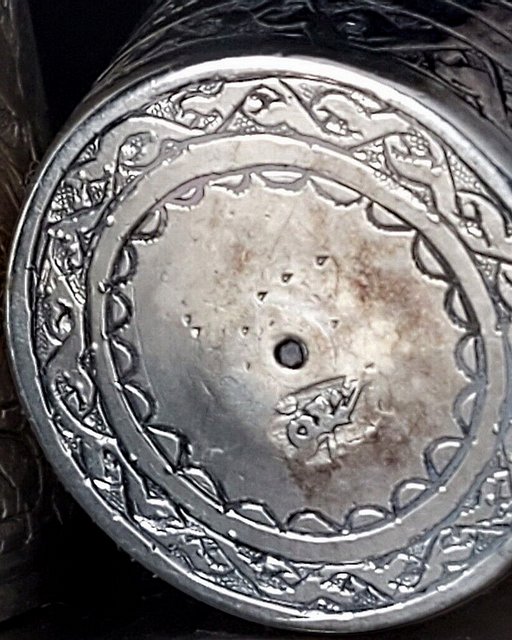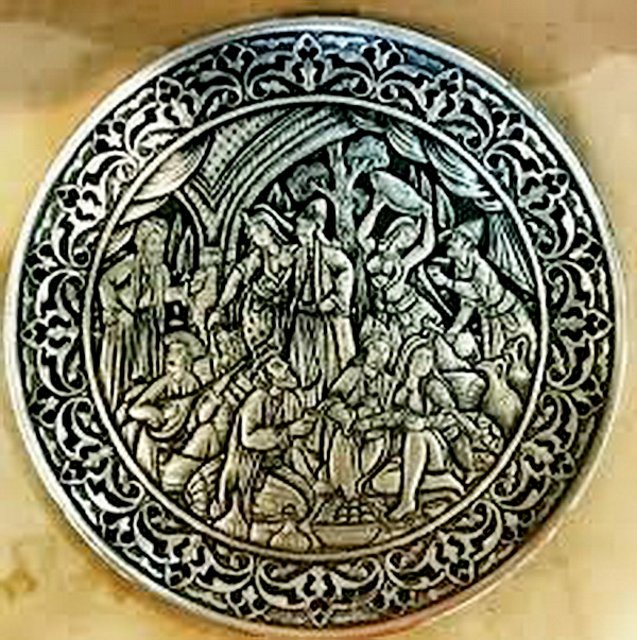Hello Alex
I did a search and there are a fair number of pieces on various sites described as Persian and marked Jafar.
The quality of the work varies and the marks are not always displayed but the iconography is Persian. You are correct in your attribution,
Without knowing the dates of a particular silver smith, it is difficult to be precise about age of the piece and location of the workshop
In the absence of any information about Jafar, Isfahan seems like a likely choice since it is a major centre of metal work and other crafts.
See details about the ebb and flow of various Isfahani crafts at
https://www.iranicaonline.org/articles/ ... rettyPhoto
The missing 84 stamp (in either Persian or European form) as an indicator of purity remains perplexing.
I am interested to know what other members think
Regards
Damon
